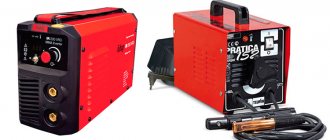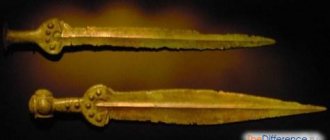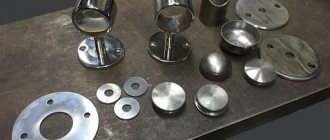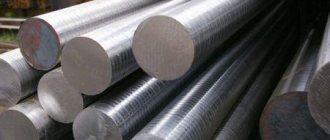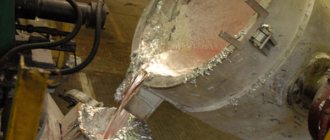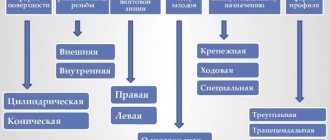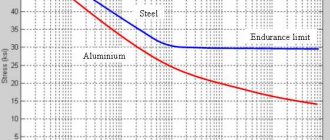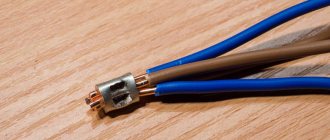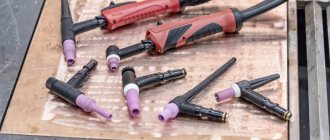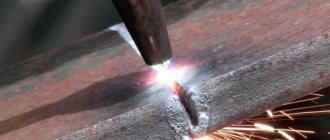Welding allows you to obtain permanent connections that are exceptionally strong. This indicator at the seam must be no lower than the base material, which is achieved by strict technology requirements and the addition of alloying substances. In addition, this process is characterized by connection speed, complexity of the acceptable form, and the ability to control and vary basic parameters. MIG/MAG welding is developing most dynamically in industrial applications, but other types are also being improved. The choice of a specific approach is determined by a number of parameters:
- Material of the parts to be connected.
- Production conditions. MIG, MMA and TIG require different organization and production preparation. The set of necessary equipment can vary from a simple power source to a set that includes a feed mechanism with precise adjustment and a compressed gas cylinder.
- Quality requirements. MIG, MAG, MMA and TIG welding should not always be considered interchangeable - they have different capabilities, including in the formation of the weld.
- Personnel qualifications. The most accessible in this are MAG and MMA. However, RDS is noticeably more difficult with increased requirements and small dimensions: leg, width, height, etc.
- Expected performance. The semi-automatic and automatic process turns out to be much faster than the manual one. Depending on this, suitable types are considered and the optimal one is selected.
MMA
mma technology diagram
In our country, the definition of manual arc welding (and the abbreviation RDS) is common. It is cheaper and easier to organize production and less demanding on equipment.
The connection of two elements in MMA occurs using an electrode - a metal rod coated with a coating containing substances that help maintain the arc, protect the welding zone, and form a seam with the desired properties. When voltage is applied, a stable short circuit is formed between the rod and the workpiece, leading to their mutual melting.
The difficulty may come from requiring welder qualifications. To obtain a neat and reliable joint, skill and long experience are required.
In MMA, special attention is paid to the condition of the electrodes, which should not be wet or crumbling. Do not neglect pre-drying and checking.
Applications and Benefits
Such equipment can be used in the same way as welding aluminum TIG or MIG separately. These are auto repair shops, mechanical engineering, ship repair, food and chemical industries (tanks, collectors, filters, highways, etc.). But thanks to the automatic feed of filler wire, welding processes will be completed faster. Since the arc burns between the tungsten electrode, it does not “walk” and is easier for the welder to control. The specialist has a free second hand with which to support the workpieces. There is no need to regularly unwind the wire from the spool and twist it into a more compact skein. All this increases the productivity of your enterprise.
For example, in production there will be no need to hire an additional group of welders and buy equipment for them in order to increase the volume of output. This can be done by the same workforce, provided they use a combination of EWM Tetrix AC/DC + TigSpeed devices and a specially configured burner.
MIG/MAG
Mig/mag technology diagram
The question of what MIG/MAG welding is should not be misleading, despite the unusual designation.
The English abbreviation MIG/MAG (MIG/MAG) hides the well-known semi-automatic welding with electrode wire in a shielding gas environment.
Instead of a rod, a thin wire acts as an electrode, which is semi-automatically fed into the zone where the weld is formed. This compensates for the melting process and simplifies the performer’s task.
Small diameter wire (from 0.8 to 3.0 mm) allows you to obtain compact connection sizes of a few millimeters.
Fundamentally, MIG differs from MAG in the type of protective gas, which is necessary for isolation from the environment with its high oxygen content in the air. Oxidative processes negatively affect the structure through the formation of intercrystalline rust. MIG welding involves the use of inert gas, which itself does not enter into any chemical reactions, but due to its relatively large weight, tends downward, displacing air. A local microclimate is formed, which shows good results.
MAG welding involves interaction between the natural and created environments, accompanied by the binding of oxygen.
Interesting “symbiosis” of equipment
If it were possible to weld aluminum parts as accurately as TIG and as quickly as MIG, the quantity produced would increase without sacrificing quality, which would help increase profits. Is there a technological solution for this?
Yes, I have! This is a bundle of equipment that includes: EWM Tetrix 351 AC/DC inverter + EWM tigSpeed drive 45 coldwire feed mechanism + special burner. Thanks to this set, TIG welding is carried out using alternating current, but instead of manually supplying the additive, an automatic one is used, on top of a nozzle with a tungsten electrode. This ensures process continuity, high execution speed and better quality.
TIG
Tig technology diagram
The decoding of this abbreviation leads to welding with a non-consumable electrode in an environment of inert gases. The main welding material used is thin, sharpened tungsten rods that are strong enough not to melt at operating temperatures. Wire is used as an additive, but its presence is not a prerequisite.
The argon-based protective environment not only sets the correct casting processes, but also creates a melting zone that is local and deep.
TIG is demanding on the level of the welder and on the equipment. Due to its minimal heating, it is usually used to work with aluminum or thin-sheet stainless steel. The same applies to MIG welding.
Flux
Among the types of arc welding, in addition to MIG MMA TIG, it is also worth mentioning that it proceeds under a layer of flux. What flux is has many variations. All possible materials have in common such qualities as flowability, the ability to influence the formation of a seam at all stages of remelting (including under unfavorable external conditions), and the ability to form a monolithic crust after cooling. The use of flux shows very good results, but complicates the process itself and implies additional costs. MIG, TIG and MAG are more economical and easier to implement.
Material from Miller - understanding the current-voltage characteristics and the difference between MMA and TIG
CC) Welding Machine for Training Purposes.
Understanding the personality of a DC (CC) welder can mean the difference between a successful or unsuccessful welding test, or the difference between a student who will pursue a career in welding and one who may abandon the profession after being disappointed with the results. Learn how to read a current-voltage (volt-ampere) curve and select the appropriate welding machine for training purposes.
True story: A young apprentice (let's call him Joe) took tests to become a MMA welder on pipelines using unfamiliar equipment. Joe failed several tests in a row, which had never happened before. Is it Joe's fault? Didn't he work out enough? No, Joe did everything right, but he chose the wrong equipment to do it. The instructor noticed Joe's troubles and put him on a different welding machine, and his next weld was flawless.
What Joe and many others have not paid attention to are the two different features (“characters”) of DC welders. You can learn a lot about the features of the device by looking at its current-voltage curve, the “birth certificate” of the welder:
1. MMA welding machines that can TIG weld . An example of this type of welding machine would be a DC generator, an 8-piece magnetic amplifier type unit, or a traditional welding machine with a large mechanical rheostat to control the current. Old welders call these machines “droopers” because of the shape of their current-voltage characteristics (see Fig. 1).
Figure 1 - The sloped I-V curve of a traditional MMA block (which can also TIG weld) allows the operator to control the heat output and shape of the weld by manipulating the electrode.
2. TIG welders that “ can weld MMA .” They have a falling DC I-V characteristic (see Fig. 2). An example of this type of welding machine is a regular TIG machine (Joe chose this type of welding machine with the E7018 electrode).
Figure 2 - Notice that the current-voltage curve on this modern TIG welder is almost vertical. The current will remain constant even if the operator changes the voltage (arc length).
There are also welders that work equally well in TIG and MMA, and these often use inverter technology (Joe used an inverter for his welding test). Welding machines of this type can generate both diagonal and vertical current-voltage characteristics (Fig. 3).
Figure 3 - I-V characteristic of an inverter that “changes properties” when switching between MMA and TIG modes. Also note how the arc force control percentages (arc force) increase the current as the voltage drops.
Reading the I-V curve
To interpret a current-voltage curve, you need to understand the relationship between arc length and voltage. A basic fact of the arc welding process is that as the length of the arc increases, the voltage increases. As the arc length decreases, the voltage drops.
Manufacturers design welding machines to weld in such a way that when the operator changes the arc length, the current is the opposite of the voltage. If the operator reduces the arc length (lowers the voltage), the current increases. If the operator increases the arc length (increases the voltage), the current decreases. Combined with this information, another basic fact that operators need to remember is that voltage represents electrical pressure. Pressure (voltage) controls the height and width of the weld, while current controls penetration.
Armed with this knowledge, repeat the analysis of Fig. 1. Experienced MMA welders know that “pulling a long arc” (increasing voltage while decreasing amperage) allows them to create a flat, wide bead with shallow penetration. A long arc also causes the weld pool to solidify faster because it reduces the overall amount of energy. Conversely, moving the electrode closer to the joint (increasing current while decreasing voltage) creates a narrower weld, deeper penetration, and a thinner (hotter) weld pool.
Thus, MMA welding machines with “drooper” characteristics (flat current-voltage characteristic) allow the operator to control the quality and appearance of the weld by manipulating the electrode. However, this welder, while ideal for MMA stick welding, is not well suited for TIG (below average). Imagine you are welding an outside corner on 18-gauge stainless steel. If for any reason you reduce the arc length (lower voltage), the "tig welder" will try to maintain the total output power (Watts) by increasing the amperage - and that additional amperage (penetration ) can burn a hole in thin material.
For this reason, manufacturers make welders "TIG only" so that voltage changes do not affect the current. As can be seen in Fig. 2, such a device provides a vertically incident current-voltage characteristic. It holds a constant current regardless of voltage (arc length), which is what caused Joe to fail during his MMA welding test. Joe may have been the best welder in the world, but the "TIG machine that could weld MMA" simply couldn't respond correctly to Joe's manipulation of the electrode.
Manufacturers of conventional TIG/MMA welding machines have overcome some of these limitations by adding arc force (more on this below). However, many schools have older TIG equipment without this feature or, if they have modern equipment, not everyone understands how to use arc force. Either way, students are at a disadvantage when learning to weld MMA. Additionally, TIG-specific machines have more complex controls that can be confusing for beginners. Finally, although many welders do very well, they simply cannot beat the benefits and efficiencies of new technology.
Choosing the right welding machine
Inverter technology allows manufacturers to create welding machines with “several characters”, with a current-voltage characteristic as in Fig. 3. In principle, since the I-V characteristic is controlled by microprocessors and high-speed current switching devices, the inverter can produce almost any kind of I-V characteristic. In short, inverters can perform all welding processes equally well.
For many applications, a CC/CV DC/DC converter with an output of 350 amps at 60 percent duty cycle will meet most welding needs. This type of device (such as the Miller XMT® 350 CC/CV Inverter) can train students in stick welding (MMA) and TIG welding in a wide range of applications, as well as train students in MIG and submerged arc welding processes. Note that for TIG-specific training and AC TIG welding on non-ferrous metals, an AC/DC TIG inverter such as the Dynasty® 350 provides maximum flexibility.
To help instructors select the best selection of equipment, Miller offers training equipment selection guidelines on its welding instructors web page, MillerWelds.com/instructors.
Miller generally recommends inverters because they provide schools with several benefits:
· This is the type of welding technology that the industry is adopting, so it makes sense to train students on the equipment they will use professionally.
· Inverters are about one-fifth the size and weight of conventional welders and take up very little space, which is important.
· Some inverters offer the ability to connect to single or three-phase power over wide ranges of primary voltage (for example, 115 to 460 or 190 to 630 VAC). In addition, inverters consume significantly less current, allowing more welders to be connected to the power supply.
Most importantly, the inverter offers advanced arc controls to help students get up to speed faster. An inverter can make a good welder out of an average student, allowing excellent students to reach their full potential.
Advanced Arc Control
To provide the operator with additional arc control, advanced DC welders offer arc force control. This feature allows operators to tailor the shape of the I-V curve to better suit different joint configurations and electrode types, and can produce an arc that experienced operators describe as “soft and flexible” or “hard and guiding.”
Figure 4 - Increasing the arc force makes it easier for this pipe welder to get good penetration on an open root pass with the E6010 electrode.
Under normal electrode welding conditions and arc length, the arc voltage is approximately 20 volts. However, some welding situations require a shorter arc length, such as when the operator must push the rod into a tight corner or deep bevel of an exposed root joint. In these situations, electrodes are known to have a tendency to "stick" (eg, the voltage drops so low that the arc goes out on its own). Arc force control overcomes this problem by increasing the current when voltage levels drop below about 20 volts (see Figure 3). Increasing the current increases the overall power, keeps the weld pool molten, preventing electrode sticking and making the welder's (operator's) job easier.
It should be remembered that inverters can adjust the welding output current thousands of times per second. Thus, the speed of a human hand pushing an electrode is nothing compared to the speed of a microprocessor! Working with the latest modern welding machines is like arithmetic on a computer compared to regular abacus.
For schools and training centers that want to teach MMA, TIG and MIG* welding, choosing the right machine can mean the difference between helping students become successful as quickly as possible or leaving the welding program in frustration. The industry as a whole is in desperate need of adding more skilled welding operators to its ranks. It is our responsibility to provide students and trainees with the tools to help them succeed.
*Don't forget about multi-process CC/CV welders that provide power for MMA, TIG, MIG, flux and air arc.
Figure 5 – About the author. After retiring from the U.S. Navy, where he was a submarine contractor, Neil Borchert joined Miller Electric Mfg. Co. in 1977 and worked as an instructor for 12 years. Today, as a business development manager, he works extensively with schools and educational institutions.
Arc setting
Each welder has his own ideas about how to adjust the arc force, which is adjusted by a knob on the front panel of the machine. Some general recommendations are as follows:
For open root welds on a plate or pipe, typically select an XX10 (6010) or XX11 (6011) electrode for the first pass. During this pass, the operator attempts to achieve complete penetration. By adding arc control, usually to the high end of the scale (say 5 or 6 out of 10), the operator can control the amperage (punch) along the length of the arc.
For deeper penetration, simply reduce the arc length by inserting the electrode into the connection. At this moment - and only at this moment - the arc force control is activated and provides the required current pulse. We repeat: Operators will only experience arc change when they reduce arc length to the point where voltage levels drop below 20 volts on most machines.
For electrodes not used on open welds, increase the arc force to the point where the electrodes do not stick during welding (perhaps 2-5 on a scale of 1 to 10).
If you are using the TIG mode, set the arc force to zero or turn it off (if you have a welder with separate settings for TIG and MMA, this will not make any difference). Typically the machine disables arc control when switching to TIG mode.
Original in English: Selecting a Constant Current (CC) DC Welder for Training Purposes
Features of manual welding
The TIG welding process uses several elements, each of which has its own purpose.
The specifics of the work depend on this:
- The metal melts under the influence of an electric arc. It occurs between the electrodes when the voltage increases. One of the elements is the workpiece to be welded, the other is a special rod.
- The melting point of the tungsten element is 4000 °C. This value is higher than that of other metals. Therefore, any types of steel are welded with such rods.
- To obtain a uniform connection, the electrodes are periodically sharpened. The rod is fixed in the burner, the free end is protected with a cap that prevents short circuiting.
- The burner structure provides for a circular gas supply. Since argon is used to protect the weld pool, the method received the appropriate name. The inert gas displaces oxygen, preventing it from penetrating into the treated area. This prevents cracking of the welded joint during the cooling phase.
- Each metal has its own mode of operation of the device. The amount of gas released and the voltage value depend on the nature of the unit’s operation.
- When the edges are precisely processed, they melt and subsequently crystallize. If there is a distance between the parts that cannot be eliminated using this method, filler material is used. It is fed into the weld pool.
- TIG welding can be used to join aluminum workpieces. The shielding gas prevents metal oxidation and the edges melt evenly.
We recommend reading: The nuances of using gas welding
Cooking technology and TIG parameters
To connect metal parts using the argon arc method, perform the following steps:
- Clean the edges of the workpieces from dirt and degrease. Even if the parts look clean, you should not skip this step.
- Set the current strength. The quality of the welded joint depends on this parameter. There are special tables that help you choose the right current strength.
- Set the polarity. When working with direct current, choose the direct option. Reverse polarity is used when welding with alternating electricity.
- Sharpen and polish the end of the electrode. When connecting thin metal products, special rods are chosen. They are brought to the point of spiciness. When connecting thick elements, the sharpening angle is changed.
- To initiate an electric arc, a rod is passed along a metal surface. You can activate the TIG Lift option to speed up this process. Sometimes the inverter is switched to non-contact ignition mode. The latter method is available to users of expensive equipment, for whom it is preferable.
Exclusivity of the EWM tigSpeed drive 45 feeder
Having considered the general requirements for equipment for high-speed welding of aluminum, I would like to dwell a little on the expanded capabilities of the EWM tigSpeed drive 45 feeder. In addition to the above-described property of feeding the additive with oscillatory movements that imitate the welder’s hand, welding with hot or cold wire is possible here.
TIG welding with cold wire gives high speed, and the equipment is cheaper. This is beneficial for the quick assembly of leaking structures. TIG hot wire welding involves additional, resistive heating of the additive from a separate current source. Optimal heat balance increases the melting power by 60% and allows deeper penetration of the material, while maintaining a high process speed and a small weld width. This will be useful for enterprises that produce critical products (collectors, chemical containers, etc.), which undergo mandatory testing with a flaw detector.
Other advantages of the EWM feeder include:
- 4 rollers for rolling without slipping;
- the feed speed is 2 times higher than similar manual manipulations;
- Suitable for any EWM device manufactured after 2003;
- Compatible with water cooling for extended runtime;
- helps reduce harmful flue gases;
- Provides a perfectly smooth seam surface without spattering.
Purpose of technology
Since TIG welding allows you to join workpieces not only from steel and copper, but also from other metals, it is used in the following industries:
- automotive industry, production of industrial equipment components;
- shipbuilding and aircraft manufacturing;
- space industry;
- manufacturing of medical equipment;
- production of electrical tools.
Crucible welding is often used in domestic conditions.
Using a device with tungsten electrodes, you can weld car body parts, heating radiators, and metal water pipes.
How does welding happen?
The choice of welding current is approximately determined by the graph:
or be according to Table 1.
MAG welding mode (CO2 environment)
Table 1
Welding is carried out at an open circuit voltage of 19-30 V, depending on the features of the semi-automatic machine. On most household and semi-professional semi-automatic welding machines, the current supply speed and voltage are constant and not adjustable. This is done for the purpose of automatic stabilization of the arc (autocorrection).
For welding different metals, the choice of wire diameter and welding current is of primary importance. The main relationships are shown in Table 2.
table 2
The mechanism for moving the welding wire is highly complex and provides very convenient semi-automatic functionality. The MAG/MIG semi-automatic welding machine is equipped with a feed system that allows:
- perform a soft start - the wire at the beginning of welding comes out at a lower speed and allows you to ignite and stabilize the arc;
- after stopping the feed, protect the wire from welding into the torch by stopping the current supply before the wire stops;
- prevent wire sticking at the beginning of the welding process;
- smooth regulation or ensuring a constant feed rate;
- perform pulse welding mode;
- change polarity (for cored wire).
As a rule, MAG/MIG welding is performed on a current of reverse polarity - on the electrode “+”, on the product “-”, but, depending on the tasks facing the welder and the parameters of the machine, direct polarity and alternating current are also possible.
The device can operate in the following modes:
- Short Arc - used below 200 A for thin metals;
- Spray Arc - current ≥200 A and wire diameter greater than 1 mm;
- Pulse Arc - welding with a large wire diameter and low current, used for non-ferrous metals, stainless steel and aluminum, complex alloys;
- Pulse on Pulse Arc - double pulse with variable current, used for decorative seams.
What you need for TIG welding
TIG technology has also become widespread due to the fact that the generated arc generates high temperatures. Thanks to this, an experienced welder will not have a problem joining carbon steel workpieces. It is important to emphasize that this will ensure a high quality weld. In addition to steel, you can work with a large number of other metals: cast iron, titanium, aluminum and others. The seams obtained when welding stainless steel are of high quality. They don't even need subsequent cleaning.
To get started you will need:
- welding machine;
- gearbox;
- inert gas;
- filler wire.
Those who plan to engage in professional welding work need a machine with several TIG modes. You need to inquire about the type of burner. There are two of them: for welding thin sheets of metal and for all other types of work.
